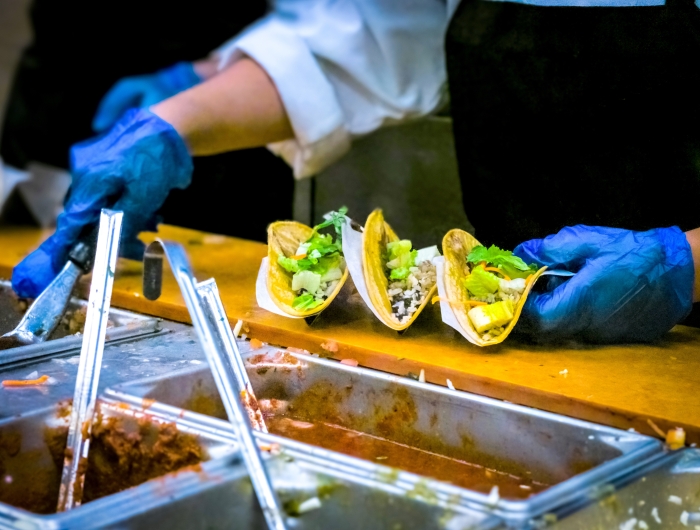CSPI urges USDA: Update 'Smart Snacks' nutrition standards

Obi - @pixel8propix - unsplash.com.
Watchdog group recommends limits on added sugars, elimination of harmful sweeteners and dyes
Almost half of the snacks, entrées, and beverages that students may purchase at school alongside the official school meal programs are too high in added sugars, artificial sweeteners, and synthetic dyes, according to an analysis of 623 such products by the nonprofit Center for Science in the Public Interest.
The foods and drinks sold in cafeteria à la carte lines, vending machines, and elsewhere on school grounds are called competitive foods because they compete with the federally reimbursable meals provided under the national school lunch and breakfast programs. The U.S. Department of Agriculture’s “Smart Snacks” regulations set nutrition and ingredient standards for competitive snacks, entrées, and beverages. But those standards are not aligned with the Dietary Guidelines for Americans’ recommendations for added sugars, and they overlook the compelling scientific evidence of the potential harms posed by certain low-calorie sweeteners and synthetic food dyes, according to CSPI.
The report comes as USDA is working on finalizing new regulations it issued in draft form in February of this year. Among other things, the agency for the first time proposed new limits on added sugars in the school meal programs.
CSPI researchers analyzed 623 single-serve, individually packaged, Smart Snacks-compliant K–12 products from 22 of the largest food and beverage manufacturers to determine whether they would meet science-based standards for added sugars, low-calorie sweeteners of concern, and synthetic dyes. If the Smart Snacks standards were aligned with the Dietary Guidelines, snacks would be limited to 5 grams of added sugars and entrées would be limited to 9 grams. Half of the snacks (157 of 315) CSPI analyzed were compliant with the 5 gram limit, and all five entrées were compliant with the 9 gram limit. Most of the beverages in CSPI’s sample (291 of 303, or 96 percent) had no added sugars.
Of the five flavored milks with added sugars, only two were compliant with the USDA’s proposed standard—no more than 10 grams of added sugars per 8 fluid ounces—which CSPI supports. Seven sugar-sweetened beverages, which had up to 15 grams of added sugars in a 12-ounce container, would not be compliant with the Dietary Guidelines, which recommends children and adolescents not consume sugary beverages.
The researchers detected low-calorie sweeteners of concern—like aspartame, acesulfame potassium, saccharin, and sucralose—in more than one-third of beverages (107 of 303). None of the beverages allowed to be sold in elementary and middle schools, such as water, milk, 100-percent juice, and diluted juice, contained these harmful low-calorie sweeteners. All the diet sodas, seven diet teas, two fruit drinks, and nearly one-fifth of the flavored waters (24 of 126)—all of which are only allowed in high schools—had at least one low-calorie sweetener of concern as an ingredient.
CSPI also evaluated the 623 products for the presence of synthetic food dyes, which are linked to attention and behavioral issues in some children. Twelve percent of snacks (37 of 315) and 12 percent of beverages (36 of 303) contained at least one synthetic dye, meaning that synthetically dyed items were in the minority. CSPI found no products with Red 3, a known carcinogen the group is separately asking the Food and Drug Administration to eliminate from the food supply. (In California, Governor Gavin Newsom recently signed legislation that would ban Red 3 and other additives in foods sold in that state, and which is likely to reverberate nationally.)
One particularly problematic beverage marketed to schools as a Smart Snack is Hawaiian Punch Fruit Juicy Red Flavored juice drink, manufactured by Keurig Dr Pepper. For starters, with only 3 percent fruit juice, the 12-ounce drink is high in added sugars in the form of high-fructose corn syrup (15 grams, or 29 percent of the Daily Value). Unusually, for a sugar-sweetened beverage, the drink also contains the artificial sweetener sucralose. The drink contains the dyes Blue 1 and Red 40, which like numbered dyes are linked to behavioral problems in some children. Similarly, the same company’s Dr Pepper Zero Sugar Cherry Flavored soda contains aspartame, acesulfame potassium, and Red 40.
CSPI found 11 sweetened apple sauces marketed to schools under Smart Snacks. Mott’s Mixed Berry Flavored apple sauce, for instance, also manufactured by Keurig Dr Pepper, has 12 grams of added sugars as well as the synthetic dyes Red 40 and Blue 1.
No entrées in CSPI’s sample contained low-calorie sweeteners of concern or synthetic dyes.
“The good news is that about half of the competitive foods we found marketed to schools are already compliant with strong, science-based standards for added sugars, low-calorie sweeteners, and synthetic dyes,” said CSPI child nutrition campaign manager Meghan Maroney. “But the USDA needs to update its Smart Snack nutrition standards so that the foods available to school kids are aligned with the Dietary Guidelines for Americans.”
CSPI recommends that the USDA limit added sugars to no more than 5 grams for snacks, and no more than 9 grams for entrées. No beverages in the Smart Snacks program should have any added sugars, according to the group, with an exception for flavored milk, which could meet USDA’s proposed product-based caps on added sugars of no more than 10 grams per 8-ounce serving, and no more than 15 grams per 12-ounce serving. CSPI further recommends that USDA ban the use of low-calorie sweeteners of concern and synthetic food dyes in competitive foods.
“The food industry should see the writing on the wall and begin reformulating now,” Maroney said. “Industry should see the need for more unsweetened and dye-free products in the K-12 market as an opportunity for innovation. They’re already halfway there.”
The study of competitive foods follows earlier CSPI report cards evaluating the foods and milks marketed to schools for use in the reimbursable federal lunch and breakfast programs.
# # #
Tags
Topics
Contact Info: Lisa Flores, 202-777-8368 or Jeff Cronin, 202-777-8370

